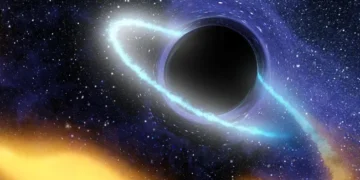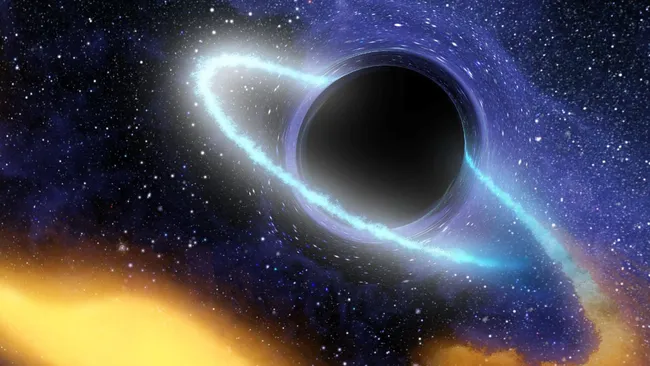For years, scientists thought dark matter interacted directly with stars to explain the similar distribution of matter in galaxies. But new research using Chile’s Very Large Telescope (VLT) has turned that idea upside down. Astronomers found that dark matter doesn’t penetrate galaxies or interact with stars as we once believed. Instead, it paints a more complex picture of galaxy evolution, challenging key ideas in modern cosmology and reshaping how we understand the universe.
The Old Theory: Dark Matter and the “Bulge-Halo Conspiracy”
For years, astronomers puzzled over the seemingly uniform density of matter in galaxies. Despite vast differences in their characteristics, galaxies all seemed to exhibit a steady decline in matter density from the center (the bulge) to the outer edges (the halo). This observation led to the theory known as the “bulge-halo conspiracy,” which suggested that dark matter and stars must be compensating for each other in some unknown way to produce these regular mass structures.
The theory was intriguing but lacked hard evidence. Dark matter, which we cannot observe directly, was often invoked as a sort of cosmic catch-all explanation. Many scientists believed that dark matter must be interacting with the stars inside galaxies, filling the empty space and maintaining a consistent density profile regardless of a galaxy’s star count.
The Study: Using Cutting-Edge Technology to See Beyond the Surface
The breakthrough came from a study led by Dr. Caro Derkenne and her international team of researchers. They used the VLT in Chile, equipped with the MUSE spectroscope, to observe 22 middle-aged galaxies as they appeared over 4 billion years ago. The team spent 8,000 hours observing these galaxies, collecting vast amounts of data that allowed them to model galactic structures in unprecedented detail.
MUSE is a revolutionary instrument because it collects three-dimensional data cubes, with each pixel containing a spectrum of light. This means that scientists can explore galaxies in a way that was previously impossible, uncovering the complex details of their structure and evolution. With this advanced technology, the team built high-resolution models of galaxy mass distribution and tested the so-called bulge-halo conspiracy.
What they found was astonishing: the uniformity that had been observed in previous studies was a product of oversimplified models. When they factored in more complex data, the seemingly consistent mass structures vanished. There was no universal law governing matter distribution across galaxies. Instead, each galaxy exhibited a unique and far more complex pattern of density, suggesting that dark matter is not interacting with stars in the way scientists had thought.
Cracking the Code: Why This Matters for Cosmology
This discovery is significant because it upends a foundational theory in modern cosmology. For years, dark matter’s interaction with stars was seen as a key component in explaining the structure and evolution of galaxies. Without this interaction, scientists must now rethink how galaxies form and evolve.
Dr. Derkenne’s team found that previous models had relied on too many assumptions and simplifications. The new models, built using advanced computing power from the OzStar supercomputer at Swinburne University, revealed that dark matter’s role in galaxies is much more subtle than previously thought. Instead of directly interacting with stars, dark matter seems to exert its influence purely through gravity, affecting the overall structure of galaxies but not penetrating their interiors.
This insight has far-reaching implications. It challenges the idea that dark matter needs to interact with normal matter to explain galactic structures and opens the door to new research exploring the gravitational effects of dark matter alone.
The Broader Implications: What’s Next for Dark Matter Research?
The findings from this study are just the beginning. As scientists continue to refine their models and gather more data, we can expect new revelations about the role of dark matter in the universe. One of the key takeaways from this research is the importance of advanced observational tools like the VLT and MUSE. These instruments allow scientists to collect more detailed data, which in turn leads to more accurate models of the cosmos.
This study also highlights the need for flexibility in scientific modeling. As Dr. Derkenne pointed out, galaxies are complex, and models that rely on too many assumptions are bound to fail. By embracing the complexity of the universe and using more sophisticated tools to study it, astronomers can develop better theories that more accurately reflect reality.
In the coming years, researchers will likely focus on further exploring the gravitational effects of dark matter and how it influences galaxy formation without directly interacting with stars. This could lead to a more nuanced understanding of the universe’s evolution, potentially answering long-standing questions about the nature of dark matter and its role in cosmic history.
Reference:
Derkenne, C., McDermid, R.M., Santucci, G., Poci, A., Thater, S., Bellstedt, S., et al. (2024). The MAGPI Survey: Evidence Against the Bulge-Halo Conspiracy. Monthly Notices of the Royal Astronomical Society. DOI: 10.1093/mnras/stae1836



















